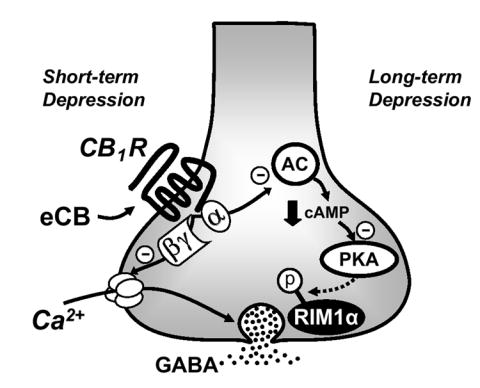Figure 8.

Model of the divergent signaling pathways downstream of the CB1 receptor that triggers eCB-mediated short- or long-term depression. During eCB-mediated short-term depression, brief activation of CB1 receptors reversibly depresses neurotransmitter release mainly by blocking presynaptic VGCC, presumably via Gβ/γ subunits. In contrast, during the induction of eCB-mediated LTD, a longer-lasting (i.e., few minutes) (Chevaleyre and Castillo, 2003; Ronesi et al., 2004) activation of CB1 receptors inhibits adenylyl cyclase (AC) activity via Gα subunits, thereby reducing presynaptic cAMP levels and PKA activity. This modification “gates” an enduring change of the release machinery that requires the active zone protein RIM1α. PKA may directly phosphorylate RIM1α and/or other associated proteins.
